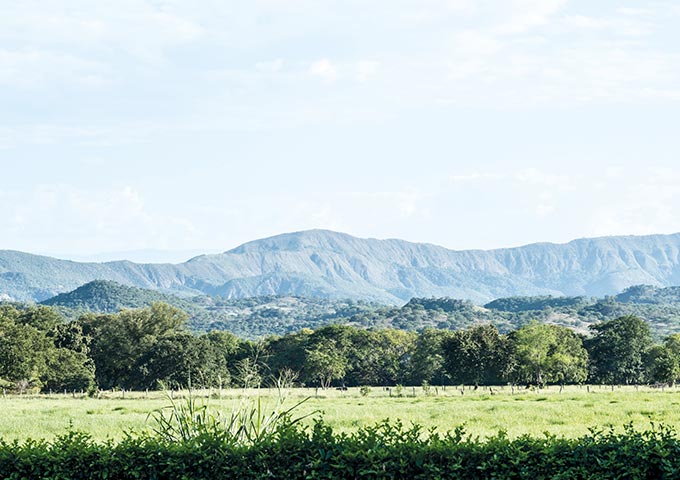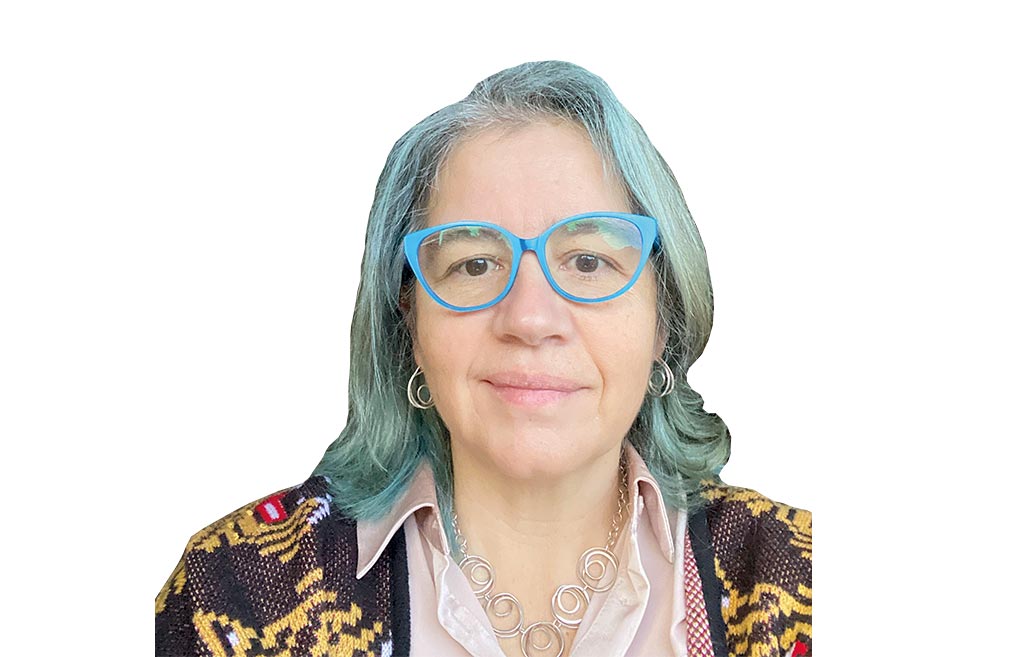The judges of lands: a vital, urgent and hardly recognized job
By: Juliana María Vergara Agámez
Photos:
Economics and Politics

By: Juliana María Vergara Agámez
Photos:
In 2019, the Constitutional Court ruled that the enforcement term of the Law on Victims and Land Restitution (Law 1448 from 2011) should be extended and gave it life until 2031. One decade after, its main challenge is still reaching most of the victims of forced displacement and rendering the truth, justice, and remediation for them.
In the concrete case of the victims of land dispossession, the law faces a number of difficulties, one of the biggest being perhaps the fact that there is no accurate figure of the magnitude of the crime. According to the report, “The role of land restitution judges in the development of public policies,” published by the Observatory of Restitution and Regulation of Agricultural Property Rights (Orrdpa is the acronym in Spanish), the estimation of many studies varies from 1.2 to 10 million hectares that must be returned. For comparison, that figure equals the total area of a country like South Korea.
In the middle of the procedure determined by the law, there are restitution judges, who are in charge of establishing and formalizing the rights of people who were dispossessed or had to abandon their lands because of the armed conflict. Judges of the Republic, in particular, play a critical role in this public policy. They not only provide the property to the victim but also direct other State authorities to conduct supportive acts.
The latter activity, although it is necessary, clashes with a fundamental principle: “Judges are supposed to deliver justice, not to put public policies into action,” as Rocío del Pilar Peña Huertas explains, researcher from the Iepri), Universidad Javeriana (Bogotá and Cali), and Rosario (Faculty of Law) take part today, aims at building a network of knowledge to follow public policy in rural Colombia. This institution intends to contribute with the followup of agencies governing property rights on the lands in Co lombia as well as their link to the armed conflict, the political system, and the State through its interdisciplinary activity.
A different view of judicial work
To obtain resources that will allow for a thorough examination of the functions of judges both civil and restitution involved in the procedures of the formalization of rural property in Colombia, the Orrdpa applied for a call to bid for contest funds, in the Big Grants modality, from Universidad del Rosario in 2018. Their project “Judges and rural property. The lost link of public policy on lands” was selected.
Two reports have been presented as a part of their strategy of knowledge socialization. The first one, in March 2020, is dedicated to introducing the methodological proposal and early findings; the second one, in March 2021, presents the preliminary results on the role the judges play in the development of public policy in land restitution, based on the characterization of the judicial sentences they pass.
An interdisciplinary team started the research in 2019, focusing on the two types of judges related to the grant of rights on rural property in Colombia: civil and restitution judges. One of the early discoveries is the fact that civil judges who, among other jurisdictions, settle conflicts related to property and have to deal with issues connected to public policy plans and programs that do not fall into their responsibilities. However, owing to the restrictions imposed by the COVID-19 pandemic and despite the great interest in this line of research, the investigation had to leave these judges aside and move forward with the restitution judges.
Along this line specifically, the researchers analyzed the activity of trial and appellate court judges in reparation cases and, specifically the summaries of 332 sentences passed in the Departments of Cundinamarca, Meta, Tolima, and Nariño between February 2015 and June 2020. In contrast to what most socio-judicial studies conduct, which focuses on the highest courts and tribunals, this study focuses on the lower courts and tribunals.
Interesting conclusions were drawn from the review. For example, the sentences do not reflect the ideological trends of trial and appellate court judges. Unlike what is found in the literature of Law Sociology, which states that judges do have biases according to their beliefs, the review of these rulings shows that magistrates judged in the same way, using the same tools. Namely, that these sentences did not allow us to unveil such trends.

A professor of Law at Rosario, Rocío del Pilar Peña Huertas highlights that one of the most interesting results is the importance of having a true bureaucracy: a structure with proceedings, responsible officials, specializations, and hierarchies, enabling a clockwork judicial system.
Another element that stands out is that judges lack the tools to conduct their work appropriately, which is difficult. They must study profoundly all the information delivered by the Land Restitution Agency (URT, is the acronym in Spanish) on the properties, analyze the regulations, and pass sentences, including the thorough application of the land policy. Besides, they have filled the holes in the norms, so they are perceived as responsible for the delay in the proceedings.
Likewise, judges serve as a very critical link, but the obligations and functions that public policies assign to them do not match up to such importance. The judicial branch is the only one where they are not hired under the service modality. However, the instability of judges is evident. The amount of work is high; they always lack the time to solve the cases or must pay, out of their own pockets, for office supplies or cleaning materials for their offices.
Furthermore, in small cities, they face setbacks like unexpected power cuts or Internet shutdowns, that abruptly interrupt the hearings. In this sense, Peña highlights that one of the most interesting findings has to do with the importance of dealing with real bureaucracy: a system with proceedings, responsible officials, specializations, and hierarchies, that enables everything to run like clockwork. They should also have guarantees and resources to work with. The message for society and the State is that this is the difference between a weak and strong democracy: “Having committed and trained officials.”
Precisely, to get a better knowledge of the world of judges, not just theorizing but delving into the practice of law, the researchers intended to collect face to-face experiences from those professionals. They wanted to understand how they deal with the cases and solve them, which led them to conduct interviews in the first stage. However, they did not achieve their goal because the judges were reluctant to talk about their work and some even felt they were put to test.
A messy country
The daily challenges that the judges face are not only related to the current issues but also to old ones from centuries ago.
It is the case of the high level of informality of private property, which has happened for a number of reasons; Professor Peña points out: “We do not have ordered or updated land registries, and the operations of land are extremely expensive. It is not enough for the purchaser and seller to agree on the price, the notary public, registry office, and taxes should all be paid.” These costs that are the same for all citizens regardless of their income level can be very high for people with scarce resources. This is one of the reasons why a considerable amount of land is under informal possession.
Although Colombia has a general agreement on the need to put rural property in order, the professor, who has a 25-year professional experience, believes it will be difficult to achieve if judges continue to face limitations such as the ones mentioned, as well as other judicial and organizational ones. Case laws from the Supreme Court and Constitutional Court, for example, contradict each other, posing legal dilemmas for lower court judges.
For the moment, the investigation reveals that the public policies protected by laws (such as land restitution) include the institutional framework to put them into action and establishes that the judges implementing such policies should have special jurisdiction, thus clearly attaining the application of said policy.
The researchers expect to share all these proposals, included in the report, first, with the judges, so they see themselves reflected on this issue and feel motivated to share their experiences. Second, with the Law university professors, especially with those who have first-hand knowledge with the day-to-day operations of the judiciary. Also, with researchers in social sciences and socio-judicial matters and, of course, with law-makers and other decision-makers, so that they keep in mind in the projects and debates those who have the mission of applying public policies.
This document is easy to approach because it is a “friendly” text. It includes a glossary with key concepts, graphs, tables, and pictures that, at a glance, make it different from the usual judicial and academic publications. It is in line with the proposal of socializing the knowledge developed by the Observatory because of its creation, and it is evidenced in other communication products, such as the podcast Con los pies en la tierra (Down to Earth) in alliance with URosa rio Radio and the blog Con los pies en la tierra, of the project Colombia+20 together with the newspaper “El Espectador.”
This research work is a tool to understand why land ownership is important in Colombia in relation to the conflict and violence. When a country is so messy as regards the management of land, it evidently gives the agricultural elites the tools to keep power to themselves,” points out the researcher